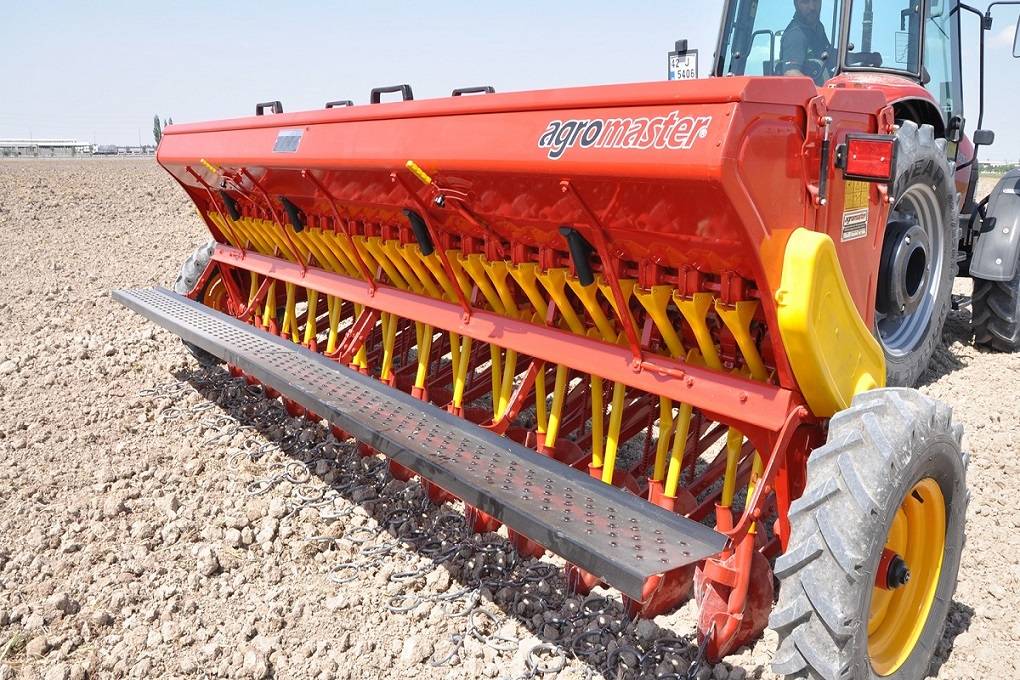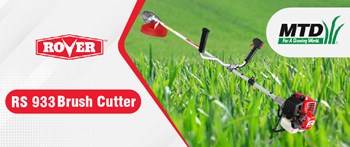
For the perfect quantity and quality of yield, it is important that the seeds are sown at the correct rate with proper spacing between rows and plants. It is also important that the seeds are down deep enough in the soil and are properly covered by it for proper germination of seeds.
A seed drill is a machine that places the seeds at a uniform rate and at controlled dept. It also ensures that once the seeds are sown, they are covered with soil. Seed drills can be drawn by animals and tractors. Some seed drills can also be fitted with a fertilizer drill which simultaneously adds fertilizer to the soil.
Components of a seed drill
There are several different components of a seed drill.
-
Frame- The frame of the seed drill is made of iron so that it is strong enough to carry heavy loads in all types of working conditions. All of the other components of the seed drill are fitted to the frame.
-
Seedbox- The seed box, as the name suggests, is a structure or box made from steel or iron that stores the seeds. The seed metering mechanism is fitted at the bottom of the box.
-
Seed metering mechanism- The seed metering mechanism collects the seeds from the seed box and feeds them to the seed tube.
-
Covering devices- After the seeds have been sowed in the soil, the covering device is used to cover the seeds with the soil.
-
Transport wheel- Transport wheels help operate the seed -ropping mechanisms with suitable attachments.
Functions of seed drills
The functions of a seed drill include-
-
The seed and fertilizer metering mechanism helps place seed and fertilizer in an even manner.
-
The depth for sowing seeds can be automatically adjusted as well. Seed-cum-fertilizer drills can also come with a knob to adjust the flow of fertilizer,
-
Seed drills can be used for the placement of all kinds of seeds.
-
It covers the seed properly with soil in order to enhance germination and growth.
Advantages of seed drills
-
Seed drills overturn the soil while sowing and covering the seeds. Therefore, it involuntarily facilitates weed control.
-
Unlike when sowing is done manually, the seeds are planted uniformly while using the seed drills. It also leads to less displacement of soil. Therefore, it is very useful in areas with a high risk of soil erosion.
-
Seeds are sown at a uniform seed rate, depth, and in an even manner. This promotes uniform germination and rate of plant growth.
-
Since the seeds are sown in an even manner, there is less damage to the soil, less water wastage, less fertilizer wastage, and overall lower cost.
-
Seed drills also save costs on tilling the land since the seeds are sown directly into the soil in one round. The farmer saves money on fuel expenses as well.
-
It covers a large field in a relatively short span of time.
-
It is more environmentally friendly than traditional methods of sowing because there is less wastage of seeds, fertilizers, and pesticides.
-
Seed drill equipment allows for precise seed coverage which increases crop yield, helps with weed control, and accelerates crop growth.
Seed drills also have certain disadvantages. For instance, it increases the cost of cultivation, requires the assistance of an expert technician to run the seed drill, is not feasible in clay and stoney soils, and takes more time in comparison to broadcasting.









